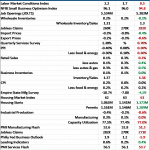With gold miners’ stock prices surging dramatically this year, investors’ attention is starting to return to the gold juniors. These smaller miners and explorers suffered terribly in recent years, all but abandoned as gold slumped to major secular lows. But even during gold’s darkest quarter, the fundamentals of the juniors actually mining gold remained quite strong. This portends explosive profits growth as gold recovers.
Most investors think of junior gold stocks as the Wild West of commodities stocks, with good reason. The legendary American humorist Mark Twain allegedly described a gold mine as a hole in the ground with a liar at the top! There are literally hundreds of gold juniors, a number that swells whenever gold grows more popular. And the great majority of these tiny companies truly are junk, they are indeed doomed to fail.
That grim reality is seldom due to nefarious intent, but to the almost-insurmountable challenges involved in finding an economic deposit of gold and bringing it to production. The whole process of exploring for gold, drilling to confirm it, designing a mine, securing the myriad of governmental permits necessary to mine, and then constructing a mine is exceedingly time-consuming and excessively capital-intensive.
As I did the research for this essay, I waded through the 2015 annual reports of dozens of junior golds. One that really stuck out came from elite explorer NovaGold, which owns a couple of the world’s biggest and best undeveloped gold deposits. Its chairman wrote an amazing article included in its annual report that outlines the extreme difficulty inherent in bringing any gold deposit to production, an essential read.
Last year, the average time it took to bring a gold deposit to production was 15 years. Think about what your own life was like 15 years ago, and it’s apparent that is a vast span of time. It is almost as long as the great 17-year secular-bull and -bear cycles in Long Valuation Waves that drive stock markets. Can you imagine how hard it would be to captivate investors’ attention for 15 long years? It seems impossible.
Yet that’s what junior golds have to accomplish. Banks won’t even think about loaning money to gold explorers yet to find a great deposit, so the equity markets are their only source of capital. They need to explore for years, while keeping investors interested enough to buy their periodic stock offerings. And then it takes another 15 years after a deposit is found to bring it into production. And that’s getting worse.
Industry projections of the time from discovery to production are expected to swell near 24 years in 2016, and 33 years by 2018! Tapping equity markets for a quarter to a third of a century before cash flows start coming in defies belief, especially considering the bull-bear cycles in gold are way shorter. Great junior gold explorers able to maintain investors’ interest during gold bulls usually lose it in subsequent bears.
So gold’s relentless weakness in recent years, driven by the Fed’s surreal stock-market levitation, has had a catastrophic impact on the junior gold explorers. Many didn’t survive as investors abandoned this sector and left it for dead, unable to raise enough capital to continue operations. And nearly all the rest had to vastly cut back their exploration, doing everything they could to survive a gold-stock apocalypse.
That culminated just months ago, with gold slumping to a dismal 6.1-year secular low in mid-December after the Fed hiked rates for the first time in 9.5 years. Gold stocks followed gold as usual, plunging to a fundamentally-absurd 13.5-year secular low in mid-January. Investor sentiment, and therefore juniors’ ability to raise capital, had never been worse according to countless battle-hardened industry veterans.
This has huge implications for future gold supply. The junior explorers are critical to the entire gold-mining industry since they discover new deposits essential for feeding the gold-mining pipeline. Since all existing gold mines are constantly depleting, the miners have to replenish their reserves with new deposits. With exploration plummeting in recent years, that pipeline will be severely impaired for many years to come.
That NovaGold annual report showed gold discoveries peaked way back in 1995 near a 3-year moving average of 140 million ounces. Despite soaring gold-exploration budgets as this metal was very strong between 2009 to 2012, 2014’s gold discoveries had plummeted 96% to around 5m ounces! The terrible plight of the junior gold explorers guarantees gold supplies are going to be constrained for at least a decade.
Global peak production near 102m ounces was hit last year, and industry projections show it falling for all foreseeable future years. The venerable World Gold Council recently confirmed this new trend in its Q4 Gold Demand Trends report. It showed that global mine supply dropped 9.3% YoY in Q4, which was its first quarterly decline since that once-in-a-century stock panic battered the gold miners in late 2008!


















Leave A Comment